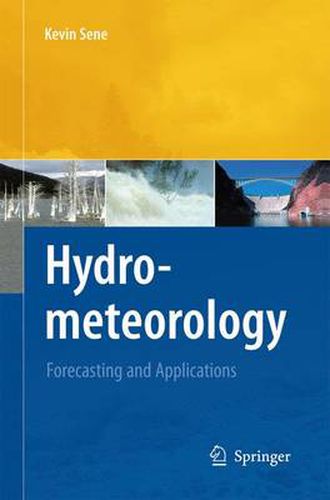Readings Newsletter
Become a Readings Member to make your shopping experience even easier.
Sign in or sign up for free!
You’re not far away from qualifying for FREE standard shipping within Australia
You’ve qualified for FREE standard shipping within Australia
The cart is loading…






This title is printed to order. This book may have been self-published. If so, we cannot guarantee the quality of the content. In the main most books will have gone through the editing process however some may not. We therefore suggest that you be aware of this before ordering this book. If in doubt check either the author or publisher’s details as we are unable to accept any returns unless they are faulty. Please contact us if you have any questions.
This book provides an introduction to recent developments in the area of hydrome- orological forecasting, with a focus on water-related applications of meteorological observation and forecasting techniques. The Encylopaedia Britannica de?nes hydrometeorology as a branch of met- rology that deals with problems involving the hydrologic cycle, the water budget and the rainfall statistics of storms…(continued). The topic spans a wide range of disciplines, including raingauge, weather radar, satellite, river and other monitoring techniques, rainfall-runoff, ?ow routing and hydraulic models, and nowcasting and Numerical Weather Prediction techniques. Applications include ?ood forecasting, drought forecasting, climate change impact assessments, reservoir management, and water resources and water quality studies. The emphasis in this book is on hydrometeorological forecasting techniques, which are usually distinguished from prediction or simulation studies in that es- mates are provided for a speci?c time or period in the future, rather than for typical past, current or future conditions. Often this requires the use of real-time obser- tions and/or forecasts of meteorological conditions as inputs to hydrological models. The availability of information on current conditions also means that - parti- larly for short lead times - data assimilation techniques can be used to improve model outputs; typically by adjusting the model inputs, states or parameters, or by post-processing the outputs based on the differences between observed and forecast values up to the time of the forecast.
$9.00 standard shipping within Australia
FREE standard shipping within Australia for orders over $100.00
Express & International shipping calculated at checkout
This title is printed to order. This book may have been self-published. If so, we cannot guarantee the quality of the content. In the main most books will have gone through the editing process however some may not. We therefore suggest that you be aware of this before ordering this book. If in doubt check either the author or publisher’s details as we are unable to accept any returns unless they are faulty. Please contact us if you have any questions.
This book provides an introduction to recent developments in the area of hydrome- orological forecasting, with a focus on water-related applications of meteorological observation and forecasting techniques. The Encylopaedia Britannica de?nes hydrometeorology as a branch of met- rology that deals with problems involving the hydrologic cycle, the water budget and the rainfall statistics of storms…(continued). The topic spans a wide range of disciplines, including raingauge, weather radar, satellite, river and other monitoring techniques, rainfall-runoff, ?ow routing and hydraulic models, and nowcasting and Numerical Weather Prediction techniques. Applications include ?ood forecasting, drought forecasting, climate change impact assessments, reservoir management, and water resources and water quality studies. The emphasis in this book is on hydrometeorological forecasting techniques, which are usually distinguished from prediction or simulation studies in that es- mates are provided for a speci?c time or period in the future, rather than for typical past, current or future conditions. Often this requires the use of real-time obser- tions and/or forecasts of meteorological conditions as inputs to hydrological models. The availability of information on current conditions also means that - parti- larly for short lead times - data assimilation techniques can be used to improve model outputs; typically by adjusting the model inputs, states or parameters, or by post-processing the outputs based on the differences between observed and forecast values up to the time of the forecast.